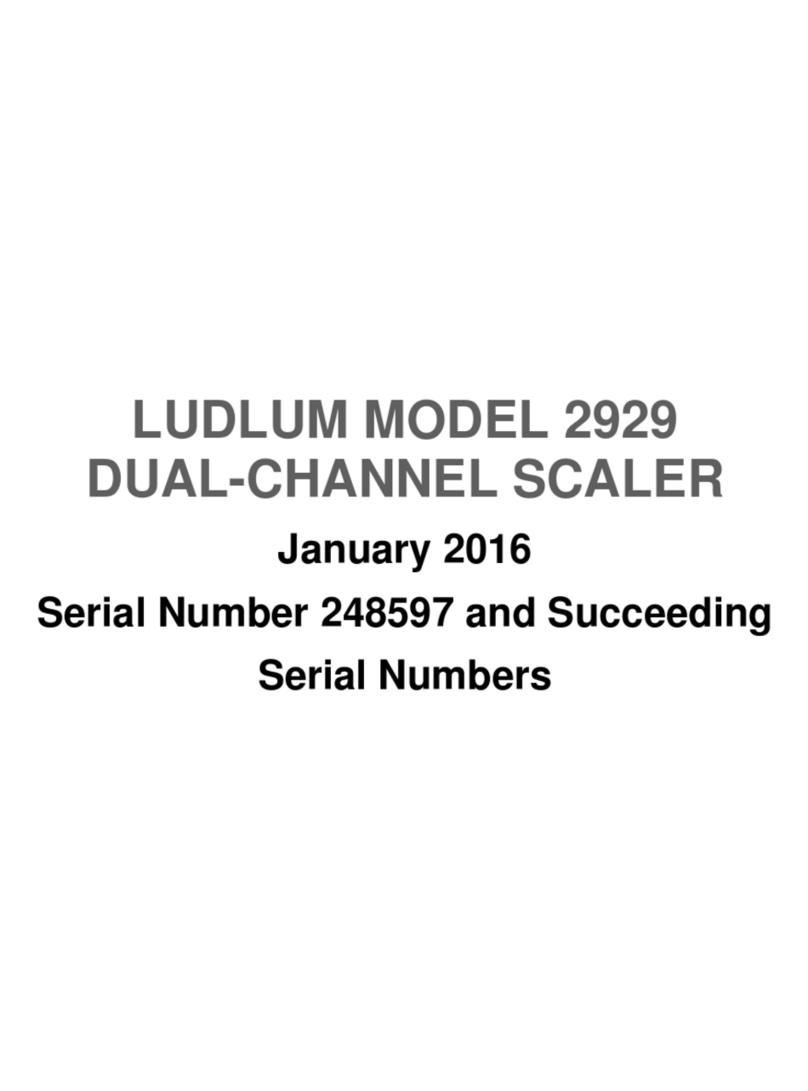
MODEL 2350-1 Data Logger
3
TABLE OF CONTENTS
1. INITIAL INSTRUMENT CALIBRATION .........................................................................
1.1 Equipment Required .........................................................................................
1.2 Instrument Preparation .....................................................................................
1.3 Threshold and Window Calibration ...................................................................
1.4 High Voltage Calibration ...................................................................................
1.5 Overload Calibration .........................................................................................
1.6 Alarm Setpoints ................................................................................................
2. CALIBRATION ROUTINES ...........................................................................................
Source Parameters and Typical Values for Dead Time and Calibration Constants .
2.1 High Voltage Ramp Routine .............................................................................
2.2 Calibration Constant and Dead Time Calibration with background subtract .....
2.3 Calibration Constant Using a Single Point with Background Subtract ..............
2.4 Dead Time Calibration Using 2 Source Method with Background Subtract ......
3.THEORY OF OPERATION ............................................................................................
3.1 Amplifier/Power Supply Board ..........................................................................
3.2 Central Processor Board ..................................................................................
3.3 I/O Interface Board ...........................................................................................
3.4 64k Memory Expander Board ...........................................................................
4. PARTS LIST, COMPONENT LAYOUT, AND SCHEMATICS ..........................................
4.1 Amplifier / Power Supply Board Component Layout .........................................
4.2 Amplifier / Power Supply Board Schematic ......................................................
4.3 Central Processor Board Component Layout ...................................................
4.4 Central Processor Board Schematic ................................................................
4.5 64k Memory Expander Board Component Layout ............................................
4.6 64k Memory Expander Board Schematic .........................................................
4.7 I/O Interface Board Component Layout ............................................................
4.8 I/O Interface Board Schematic .........................................................................
4.9 Backplane Board Component Layout ...............................................................
4.10 Backplane Board Schematic ..........................................................................
4.11 Chassis Wireing Diagram ...............................................................................
4
4
4
4
5
5
6
7
7
8
10
12
14
16
16
18
19
20
21
23
23
25
25
26
26
27
27
27
28
28




























